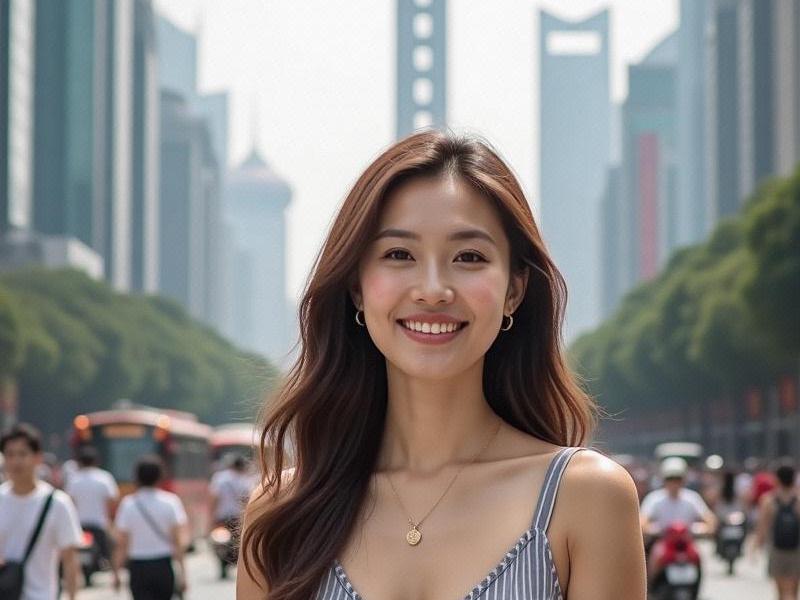An in-depth examination of Shanghai's cultural transformation from colonial relic to global creative capital, analyzing its unique blend of heritage preservation and avant-garde innovation that's redefining urban cultural development worldwide.

The Phoenix of the East: How Shanghai is Reinventing Global Urban Culture
Introduction: Culture as Urban Currency
Shanghai's cultural sector now contributes 8.7% to its GDP (2025 Shanghai Statistical Yearbook), surpassing both finance and manufacturing in growth rate. This remarkable transformation positions the city as a laboratory for 21st century cultural economics, where traditional Chinese aesthetics meet cutting-edge global creativity.
Section 1: The Creative Geography
1.1 Cultural Clusters Redefined
- West Bund Museum Mile: 18 institutions across 2km
- M50 Art District's industrial metamorphosis
- The Jing'an Sculpture Park phenomenon
1.2 Adaptive Reuse Revolution
- Power Station of Art's turbine hall exhibitions
- 1933 Old Millfun's slaughterhouse-to-luxury transformation
- Waterfront warehouses as creative incubators
1.3 The New Cultural Infrastructure
- Shanghai Library East: 1.2 million annual visitors
- The Grand Opera House's acoustic innovations
- Underground art spaces in metro stations
Section 2: The Creative Economy
上海神女论坛
2.1 Museum Economics
- Blockbuster exhibitions generating ¥380M revenue
- Digital membership ecosystems
- Cultural IP commercialization
2.2 Festival City
- Shanghai International Film Festival's global reach
- Design Week's commercial impact
- The poetry festival economy
2.3 Creative Talent Migration
- 28% increase in foreign artists (2020-2025)
- Domestic creator influx from second-tier cities
- The "Shanghai Style" aesthetic school
Section 3: Heritage as Innovation
3.1 Shikumen Renaissance
- Stone-gate house adaptive technologies
- Community museum concepts
- Heritage carbon footprint reduction
上海龙凤阿拉后花园 3.2 Intangible Cultural Heritage 2.0
- Kunqu opera VR experiences
- Shadow puppetry animation collaborations
- Jiangnan silk in haute couture
3.3 Memory Preservation Tech
- Oral history blockchain projects
- AI-assisted architectural conservation
- Digital twinning of vanishing neighborhoods
Section 4: Global Cultural Dialogues
4.1 East-West Creative Fusion
- Sino-French cultural year impacts
- Japanese design influences in Huangpu
- The New York-Shanghai curator exchange
4.2 Diaspora Cultural Bridges
- Overseas Chinese artist residencies
- The "Shanghailander" heritage movement
- Jewish refugee memorial diplomacy
4.3 Cultural Export Strategies
爱上海同城对对碰交友论坛 - Shanghai fashion weeks abroad
- Museum partnership networks
- Streaming platform content initiatives
Challenges and Innovations:
1. Commercialization Pressures
- Artist affordability crisis solutions
- Corporate sponsorship guidelines
- Alternative funding models
2. Authenticity Debates
- "Disneyfication" of historic districts
- Gentrification mitigation policies
- Community participation systems
3. Digital Transformation
- Metaverse cultural experiences
- NFT art market regulations
- Virtual tourism ecosystems
Conclusion: The Shanghai Cultural Model
Shanghai demonstrates how global cities can leverage cultural assets as both economic drivers and social glue. Its ability to honor history while embracing radical innovation offers a replicable model for urban centers worldwide seeking to thrive in the creative age. As Shanghai prepares to host the 2026 World Cultural Forum, its experiment in cultural urbanism enters its most exciting phase yet.